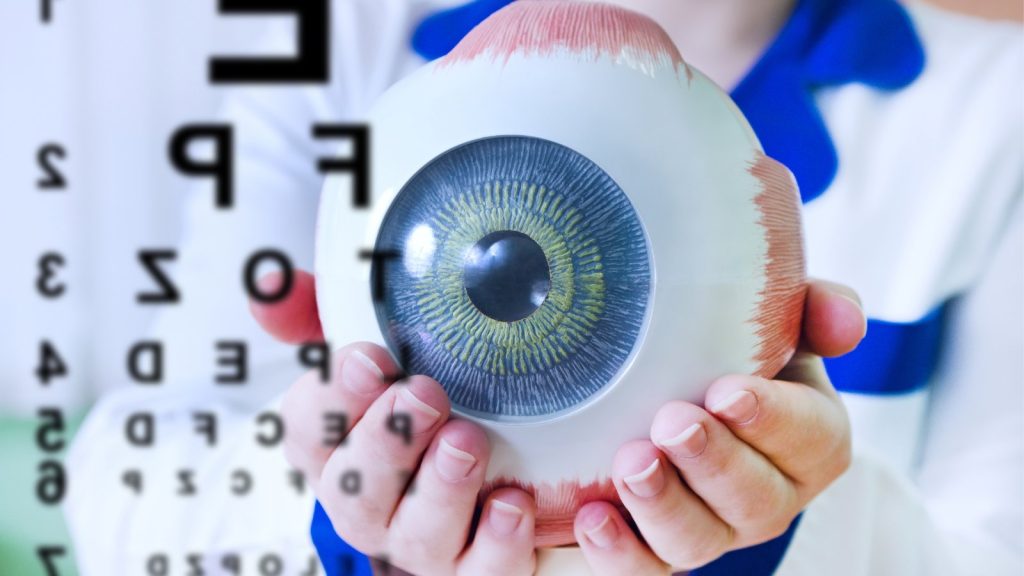Finest Refractive Surgeries in AL: State-of-the-Art Eye Care
Wiki Article
The Function of Advanced Diagnostic Tools in Identifying Eye Disorders
In the world of ophthalmology, the usage of advanced analysis tools has actually reinvented the early recognition and administration of numerous eye conditions. From spotting refined modifications in the optic nerve to keeping track of the development of retinal illness, these modern technologies play an essential role in improving the accuracy and effectiveness of diagnosing eye conditions. As the demand for specific and timely medical diagnoses remains to expand, the integration of innovative tools like optical coherence tomography and aesthetic field screening has actually ended up being indispensable in the realm of eye treatment. The intricate interaction in between technology and ocular practices not only clarifies elaborate pathologies yet also opens doors to customized therapy strategies.Importance of Early Diagnosis
Very early medical diagnosis plays a crucial function in the efficient monitoring and therapy of eye problems. Prompt recognition of eye problems is crucial as it allows for prompt intervention, potentially avoiding additional development of the disease and minimizing long-lasting complications. By finding eye problems at a very early phase, medical care carriers can offer appropriate therapy strategies customized to the certain problem, eventually leading to better end results for people. In addition, very early diagnosis allows patients to access essential assistance services and resources earlier, boosting their general high quality of life.
Modern Technology for Finding Glaucoma
Advanced diagnostic innovations play a vital function in the very early discovery and tracking of glaucoma, a leading reason of irreparable loss of sight worldwide. An additional innovative device is visual field testing, which maps the sensitivity of a patient's aesthetic area, assisting to find any type of areas of vision loss characteristic of glaucoma. These advanced analysis devices make it possible for ophthalmologists to diagnose glaucoma in its very early phases, enabling for timely treatment and far better administration of the disease you can try this out to prevent vision loss.Role of Optical Comprehensibility Tomography

OCT's capacity to measure retinal nerve fiber layer thickness enables specific and objective measurements, assisting in the early detection of glaucoma also before aesthetic area problems emerge. Additionally, OCT technology allows longitudinal tracking of structural modifications in time, facilitating individualized treatment strategies and timely treatments to assist maintain individuals' vision. The non-invasive nature of OCT imaging additionally makes it a preferred selection for monitoring glaucoma development, as it can be duplicated on a regular basis without triggering pain to the client. Overall, OCT plays a critical function in boosting the diagnostic accuracy and monitoring of glaucoma, ultimately adding to better results for people in jeopardy of vision loss.
Enhancing Diagnosis With Visual Area Screening
A crucial part in comprehensive sensory examinations, aesthetic area screening plays a pivotal role in enhancing the diagnostic process for different eye problems. By assessing the full level of a patient's aesthetic area, this examination provides essential info regarding the useful honesty of the whole aesthetic path, from the retina to the aesthetic cortex.Aesthetic field testing is particularly important in the medical diagnosis and administration of conditions such as glaucoma, optic nerve conditions, and different neurological illness that can affect vision. Through quantitative measurements of peripheral and central vision, clinicians can spot subtle adjustments that might show the existence or progression of these disorders, also prior to obvious symptoms occur.
this post
Furthermore, visual area screening enables for the monitoring of therapy efficiency, assisting ophthalmologists customize restorative interventions to specific people. eyecare near me. By tracking modifications in visual area performance over time, medical care suppliers can make educated decisions regarding adjusting drugs, recommending medical interventions, or applying other ideal steps to preserve or boost a client's aesthetic function
Handling Macular Degeneration

Conclusion
In conclusion, progressed analysis tools play an essential role in recognizing eye conditions early on. Technologies such as Optical Coherence Tomography and aesthetic field testing have actually considerably improved the precision and performance of identifying conditions like glaucoma and macular deterioration.Report this wiki page